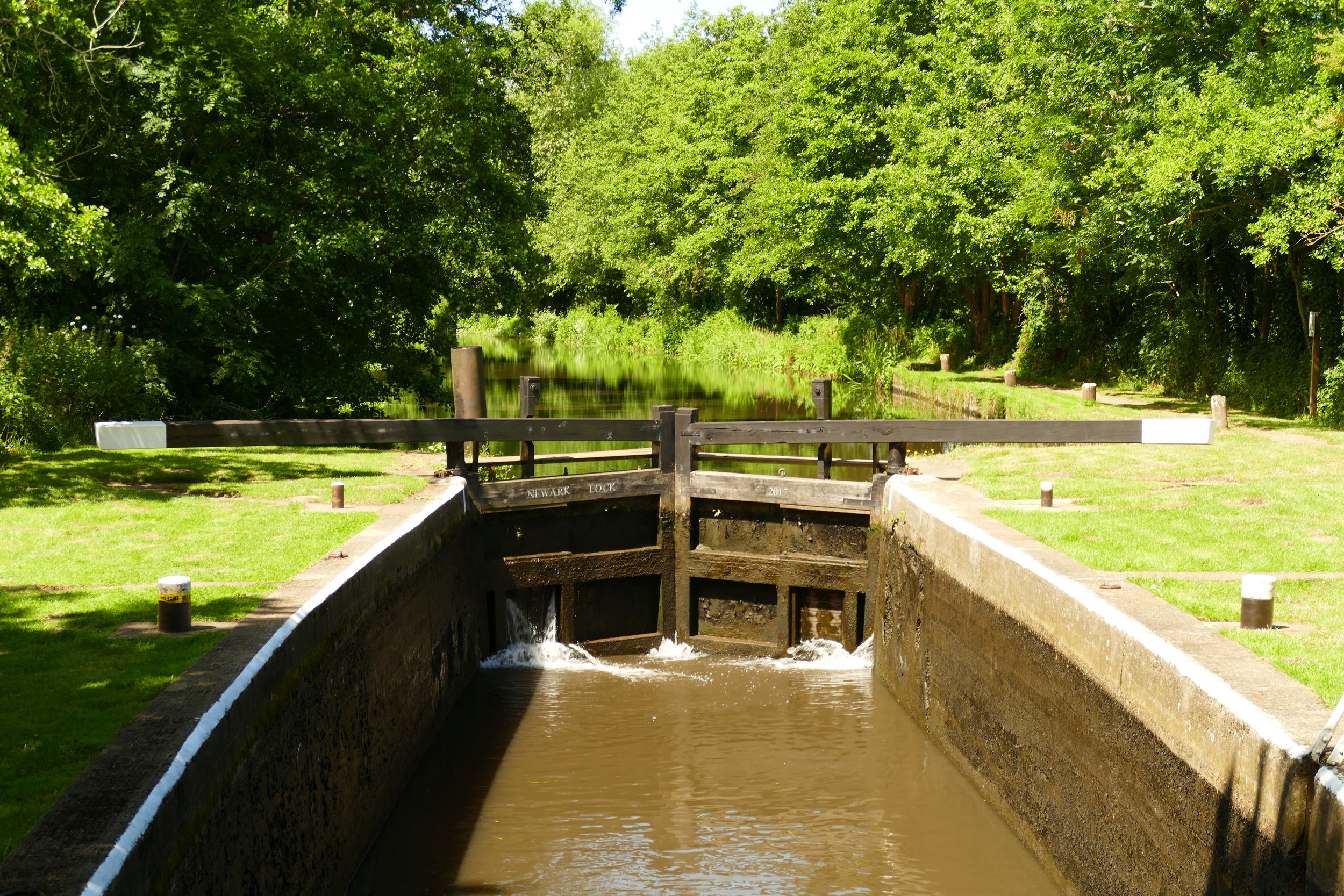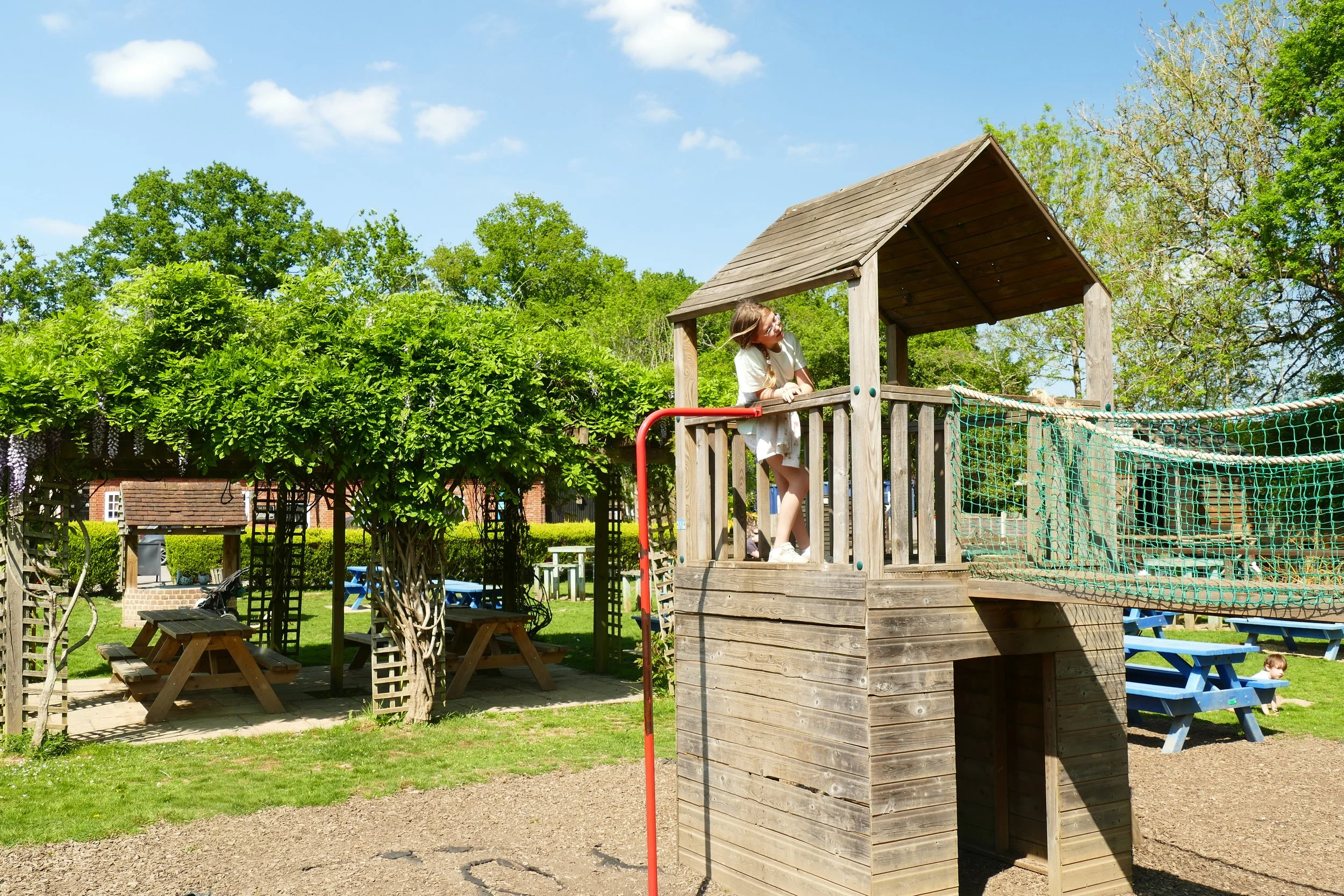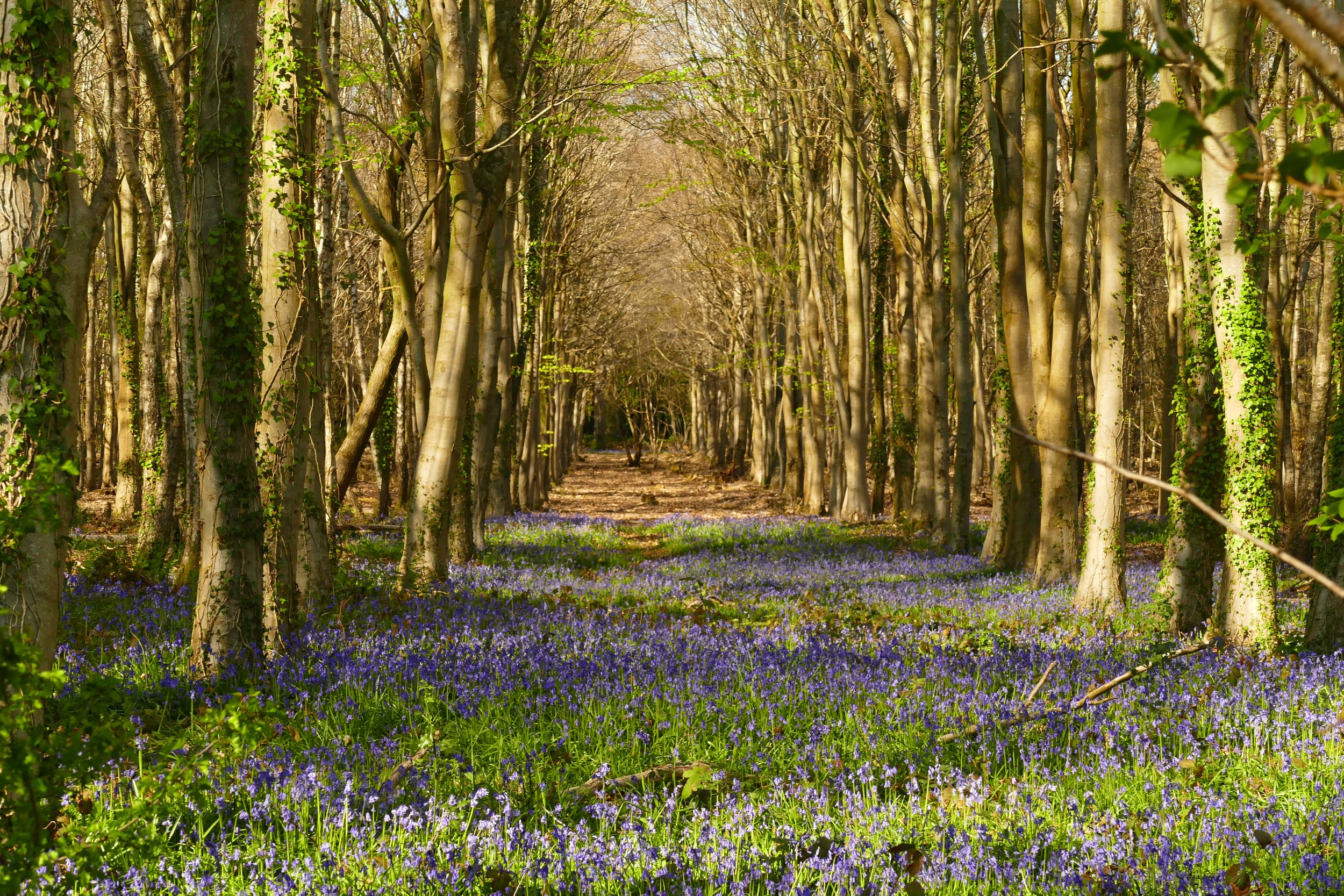Pyrford Lock
Woking
Children will enjoy crossing the locks and viewing the houseboats moored along the canal on this walk.
Newark Priory
The Basics for the Linear Route
Time: 1 hr 31 mins, there and back
Distance: 6.1 km, there and back
Terrain: Flat tow paths, not always even underfoot and a couple of bridges/weir to cross.
Pushchair: Off-road pushchairs only as it can be bumpy on some of the rougher paths.
Dogs: Dogs are welcome on this walk.
Refreshments: The Anchor at Pyrford Lock is in an incredible riverside setting.
Toilets: There are no public toilets on this walk.
Public Transport: There are no suitable public transport links for this walk.
Parking: Free car park on Newark Lane (Postcode: GU23 6DP - W3W: ///spices.tuck.tasty)
The Anchor, Pyrford, makes an incredibly good half-way refreshment stop
The following linear and circular walks along The River Wey Navigation pack in an awful lot. The romantic remains of Newark Priory, an Elizabethan summer house, a riverside pub and plenty of locks, weirs and bridges.
The Linear Route
Our child friendly route involves a linear walk from the car park to the destination pub at Pyrford Lock. For a longer, circular walk, please head to the bottom of this page.
Leave the car park through the little path at the opposite end to which you drove in. This will lead you out to the road. Cross the road and go over the bridge. On the other side, look out for the start of the towpath. Walk down onto the towpath and walk with the water to your right.
As you walk, you should see glimpses of Newark Priory to your left. Unfortunately, the ruins are on private land, so you will not be able to get up close. At Newark Lock, you should cross the water and now continue with the water to your left.
After Newark Lock you will pass through a little gate at the side of the canal and from here the path gets rougher as it enters a grassy meadow. It smooths out again just before Walsham Gates. At this point, you will need to cross the weir. Continue along the path after this, still with the water to your left and the next landmark will be a summer house on the opposite bank that once belonged to the poet John Donne (you will see the blue plaque).
From here, continue straight until you reach Pyrford Lock. It is a lovely spot with houseboats moored up, a working lock which you can watch the barges navigate, a grassy area good for picnics and the perfectly situated Anchor pub with plenty of outdoor seating from which you can take refreshment whilst watching boats ply the navigation. Return the way you came.
The Basics for the Circular Route
Time: 1 hour 40 mins
Distance: 6.2 km / 3.9 miles
Terrain: Mostly flat fields, stiles, pavements beside busy road, towpath and golf course.
Pushchair: This route is not suitable for pushchairs.
Dogs: Dogs are welcome, although there are stiles to negotiate.
Refreshments: The Anchor is placed by the canal half way around with waterside seating.
Toilets: There are no public toilets.
Public Transport: There is no public transport to this location.
Parking: Free car park on Newark Lane (Postcode: GU23 6DP - W3W: ///spices.tuck.tasty)
The ruins of Newark Priory as seen across the river
The Circular Route
We do not recommend this loop as family-friendly as it involves a narrow pavement beside a very busy road, as well as a footpath across a golf course.
For the full loop, turn left out of the car park at the far end by the traffic lights and walk along the road. You will need to switch sides a couple of times to stick with the pavement. Keep going over a couple of bridges before the road bends sharply to the right. Here you will see a steep footpath leading up through woods. This short path takes you up to the pretty St. Nicholas Church.
Cross the road beside the church and enter the newer graveyard on the other side. Take the path through the graveyard and cross the series of two stiles at the other side.
Follow the footpath across a field, over another stile and turn right along a farm track with fields on either side. Continue straight at a cross path. After this, look out for a large electricity pylon. Just before this, you will see a small footpath leading off to your right. It wasn’t signed on our last visit, but is worn through the grass, so you should notice it. Go through the little gate and follow the path with an electric fence to your right. Follow the path around the edge of the garden and come out onto a gravelled drive.
Cross Warren Lane at the end of the drive and immediately go through a gate on the other side, to the right of the entrance to Henry VIII Cottage into a little mown field. At the other side the path goes over a little bridge into a golf course.
Follow the footpath arrows to cross the golf course, looking out for flying balls as you go! On our most recent visit, all of the footpath markers through the golf course appeared to have been removed, making it really hard to find the right of way. You need to begin by heading straight across. You then need to veer left when you are about half way across the course. There are two ponds towards the far left boundary of the course and somewhere between them in the hedge you will find a small, unmarked trail going into the undergrowth. It is really hard to find, so here is the What3Words of the rough location (///cover.system.note).
Once you do find the path, you can expect it to be overgrown, but it is only a short walk before you emerge at Lock Lane. Turn right and head down the lane and cross the lock in front of the pub. The perfectly placed The Anchor pub has plenty of outdoor seating where you can watch the boats ply the canal as you eat.
Follow the canal all the way back with the water to your right, passing the Elizabethan summer house and various house boats. Just after Walsham lock, you will need to cross the weir. Turn right afterwards and continue through meadows with the water to your right.
Cross the footbridge at Newark Lock to now have the river to your left. Around this point you will have more good views of Newark Priory. It really is a truly stunning stretch of The River Wey Navigation.
Turn left when you reach Newark Lane and cross the bridge to return to the car park.
As a member, you gain instant access to all 173 PDF files. Members also benefit from special members-only discounts at some of our favourite pit-stops.
Did you know?
Standing at the river bank on the grounds of Pyrford Place, you will spot the red brick summer house that was once the hideaway of poet John Donne who lived at the house in the early 17th century.
Newark Priory was founded by Augustinian monks in the late 12th century, but was deserted during the dissolution of the monasteries in the 16th century. The building has been left to ruin over the centuries and now makes a wonderfully evocative setting. Unfortunately, you can only view it from across the river bank as it is on private land.
We are passionate about keeping The Ambling Path as a free resource available to everyone, forever. If you have enjoyed using our walking guides, then please consider leaving us a donation. This will help to cover our costs as well as rewarding the considerable time and effort needed to maintain the site. Thank you.


































